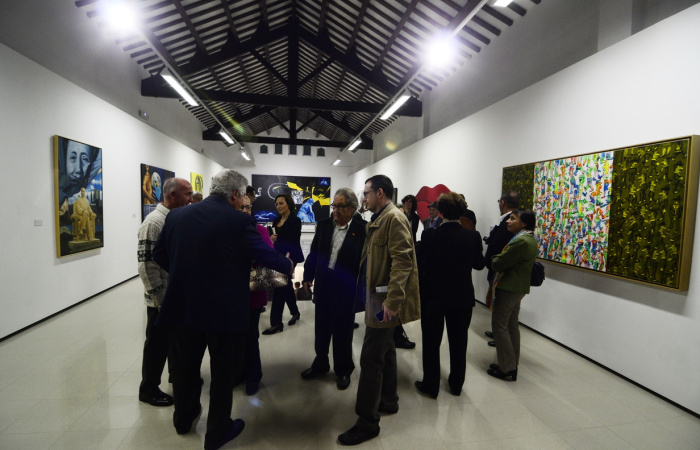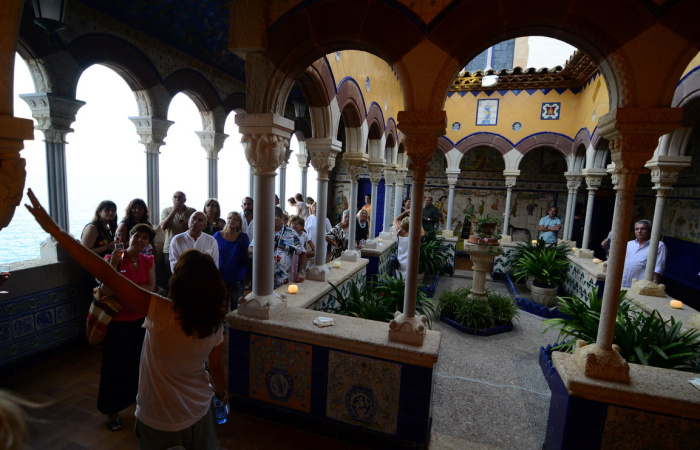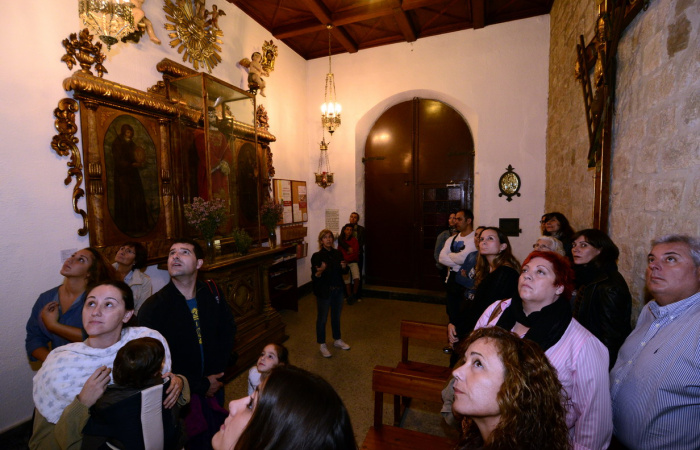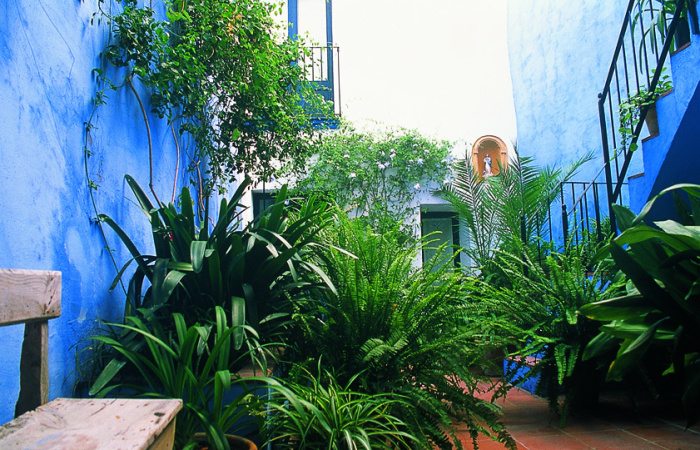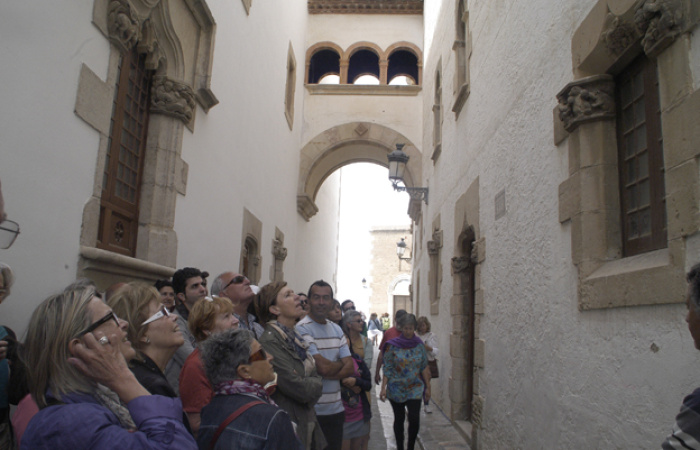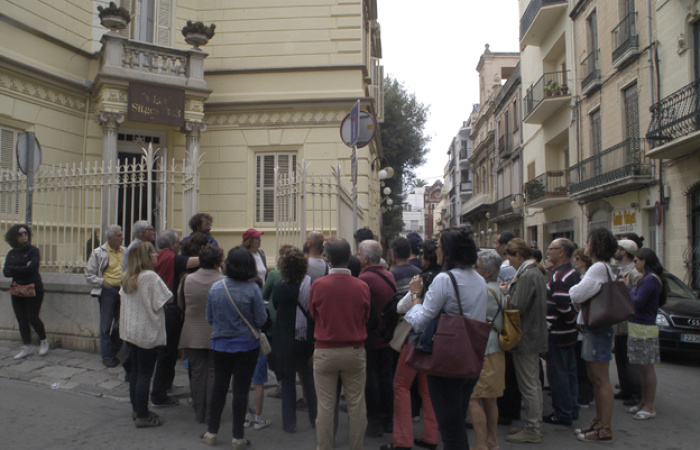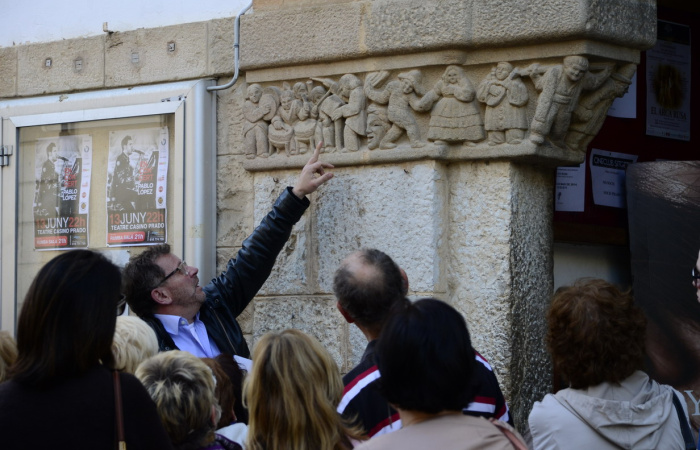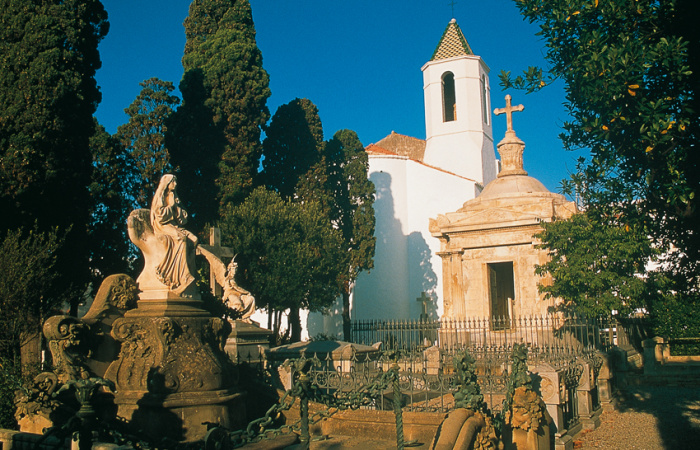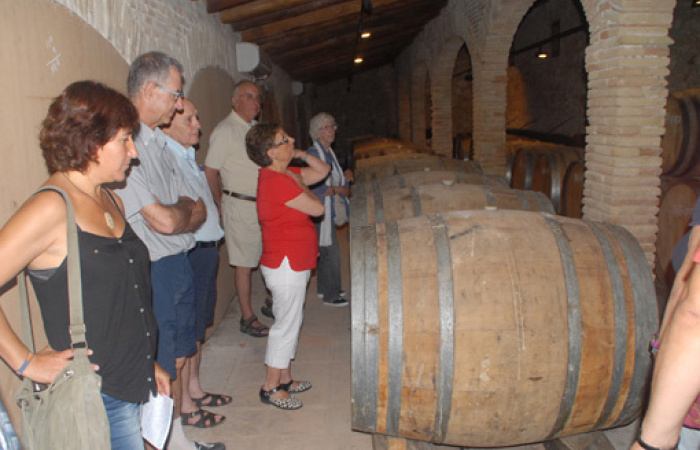Visit and routes
Museos de Sitges, íntegramente dedicados al arte y plenamente vinculados a la historia cultural del país, que ofrecen la oportunidad de recorrer toda la historia del arte. Un viaje del arte antiguo al contemporáneo entre obras de gran calidad.
TOURS GRATUITOS
Museu del Cau Ferrat
Museu de Maricel
Museu Romàntic Can Llopis
Fundació Stämpfli – Art Contemporani
Palau de Maricel
VISITAS GUIADAS
Consulta las visitas guiadas de cada museo.
VISITAS ACOMPAÑADAS PARA GRUPOS
Museu del Cau Ferrat
El recorrido presenta la antigua casa taller de Santiago Rusiñol, desde aquí descubrimos los acontecimientos más importantes de su vida, tanto desde el punto de vista humano como artístico: el enfrentamiento del artista con el mundo industrial. burguesía de la época, la vida bohemia de los pintores catalanes en el París de finales del siglo XIX, el papel como agitador cultural de Rusiñol, las Fiestas Modernistas, el concepto de Arte Total, el impacto del impresionismo en la pintura catalana y artistas catalanes como Ramon Casas, Darío de Regoyos, Miquel Utrillo, Enric Clarasó, Manuel de Falla, Erik Satie, Enric Morera, Alexandre de Riquer, Picasso...
Museu de Maricel
Visita y reseña de las obras del Museo de Maricel. Arte Antiguo: Románico, Gótico, Barroco. Arte Moderno: Romanticismo, Realismo, Modernismo, Novecentismo, Vanguardia, Figuración en el Siglo XX. También explicaremos la historia del Museo Maricel, desde la construcción del Hospital de Sant Joan en el siglo XV hasta el edificio actual, pasando por la fundación del conjunto Maricel por Charles Deering, y también las colecciones de arte actuales procedentes de la donación. del Dr. Jesús Pérez-Rosales.
Museu Romàntic Can Llopis (cerrado temporalmente por obras)
A través de un recorrido por la Casa dels Llopis construida a finales del siglo XIX, descubriremos la vida y costumbres de una familia adinerada de la época (elaboración de vino, transporte de pasajeros, iluminación, gustos...) Veremos arquitectura romántica y colecciones de herramientas de trabajo de uso cotidiano, así como otras consideradas lujosas y de gran prestigio en la misma época. La bodega que elaboraba la Malvasía de Sitges, que giraba en torno al negocio familiar.
Fundació Stämpfli - Art Contemporani
A través de un recorrido por la Casa dels Llopis construida a finales del siglo XIX, descubriremos la vida y costumbres de una familia adinerada de la época (elaboración de vino, transporte de pasajeros, iluminación, gustos...) Veremos arquitectura romántica. y colecciones de herramientas de trabajo de uso cotidiano, así como otras consideradas lujosas y de gran prestigio en la misma época. La bodega que elaboraba la Malvasía de Sitges, que giraba en torno al negocio familiar.
Palau de Maricel
En 1909, Charles Deering, industrial, filántropo y coleccionista de arte estadounidense, llegó a Sitges de la mano de su amigo Ramon Casas. Cuando descubrió el Cau Ferrat de Rusiñol y la belleza del pueblo, decidió que era el lugar ideal para llamar hogar e instalar sus colecciones. Tras adquirir el antiguo Hospital de Sant Joan y las casas de pescadores de la plaza del mismo nombre, construyó bajo la dirección técnica y artística de Miquel Utrillo el Palacio de Maricel, una auténtica joya arquitectónica novecentista de nuestra localidad. Una visita guiada nos permitirá recordar la importancia de Deering, la importancia de las colecciones a principios del siglo XX, y conoceremos a Miguel Utrillo y el novecentismo.
Parròquia de Sant Bartomeu i Santa Tecla
Un viaje a la historia del arte de nuestro país. Del románico al siglo XX. En el exterior, un comentario sobre El Baluarte, la Fragata, los Primeros Caballeros, Pensamiento Ocioso, la transformación del edificio. En el interior se comentarán los aparadores de altares, sarcófago, Ferré Bassa, la Contrarreforma y el conjunto de retablos barrocos. En la primera planta con la llegada de un conjunto de imágenes románicas, góticas, renacentistas y barrocas que forman parte de la colección del Dr. Jesús Pérez-Rosales, pertenecientes al Museo Maricel, apreciaremos una de las mejores colecciones de arte sacro. arte en nuestro país.
RUTAS ACOMPAÑADAS PARA GRUPOS
Ruta Modernista
Ruta acompañada visitando los principales edificios modernistas de Sitges, explicando las principales características e ideales de este movimiento cultural y artístico que se desarrolló en Cataluña a finales del siglo XIX y principios del XX. Sitges fue la cuna del Modernismo, con teatros, “Fiestas Modernistas”, arquitectos de renombre y la presencia constante de intelectuales y artistas que dejaron su huella en la ciudad.
Ruta Literaria
Se trata de un recorrido por los principales espacios del modernismo que compartieron Rusiñol y Maragall entre 1893 y 1898, que combina información sobre lugares y acontecimientos y la lectura de extractos literarios y poéticos de ambos escritores. El recorrido comienza en la plaza de la estación de tren o "plaça de l'estació", el transporte habitual que utilizaban Rusiñol, Maragall y quienes participaron en la Fiesta Modernista. La primera parada es el Casino Prado, que fue escenario de la Segunda (1893) y IV Fiesta Modernista (1894). El recorrido discurre por las calles conocidas como Jesús, Àngel Vidal -o "Calle del Retiro"- que acoge el Pati Blau (Patio Azul) que inspiró el ciclo pictórico, narrativo y teatral del mismo nombre para llegar finalmente al Monumento a Rusiñol, en el Playa de Sant Sebastián. Desde allí, la ruta llega hasta el Cau Ferrat, lugar que acogió la Tercera Fiesta Modernista (1894) en la que Maragall fue premiada en el Certamen Literario por sus versos decadentes. Unos años más tarde, evocó la velada en un texto titulado "Sitges". El recorrido literario Rusiñol Maragall finaliza a los pies del Monumento al Greco del Paseo de la Ribera con un fragmento del discurso pronunciado por Rusiñol sobre el Greco.
Ruta de los Americanos
La ruta de los "Americanos" de Sitges es un paseo por las principales calles de la localidad. Verás la arquitectura de los "americanos" de Sitges, que desde finales del siglo XVIII hasta mediados del XIX emigraron a Cuba en busca de fortuna ("hacer las Américas", como se llamaba). Cuando regresaron a Sitges invirtieron gran parte de sus ahorros en la construcción de edificios y mansiones. Estos "retornados" se convirtieron en una nueva burguesía muy rica y culturalmente fuerte que contribuyó a la renovación del paisaje urbano y de la vida social y cultural.
Ruta del Casco Antiguo
Es un recorrido por el casco antiguo para conocer sus orígenes y comprender el presente. Es un paseo que nos llevará desde el siglo XI, con los restos del castillo amurallado, hasta el siglo XX, con todo su esplendor cultural (desde el Modernismo hasta la actualidad). La ruta nos llevará hasta el conocido barrio marinero. como "La Ribera" y hasta la "Punta", las murallas orientadas al mar, el castillo y baluartes. La historia y evolución pasando de un pueblo pesquero a un pueblo turístico.
Ruta 'Les Ànimes'
En un recorrido por el antiguo cementerio de Sant Sebastià descubriremos el rico patrimonio de finales del siglo XIX y principios del XX, fruto del deseo de los "americanos" de tener su descanso final en una tumba monumental. Hay que destacar las obras de los escultores Josep Llimona, Frederic Marés, Manuel Fuxà, Agapit Vallmitjana, Alexander Mariotti, Josep Reynés, Joan Rebull o Pere Jou. La ruta se puede completar en el Museo Mirador de Maricel o Mirador del Museu Maricel, un enorme ventanal abierto al Mediterráneo que expone un importante conjunto de obras "modernistas" y "novecentistas" de artistas como Enric Clarasó, Josep Llimona , Josep Clarà, Joan Rebull, Pablo Gargallo o Pere Jou, entre otros.
Ruta de la Malvasía
Un recorrido desde el Museo Maricel hasta el actual Hospital Sant Joan Baptista, nos acercará a la historia de esta institución y de la Malvasía. En el recinto del hospital se realizó antes de entrar en la bodega (temporalmente cerrada por obras) donde se elabora el tradicional vino dulce de Malvasía Sitges, legado de la familia Llopis. Malvasía y explica cómo se preparó para apreciar una degustación de este vino dulce.
INFORMACIÓN Y RESERVAS
Information: museusdesitges@diba.cat
Bookings: reservasms@diba.cat
Phone. 93 894 03 64


 Buy tickets
Buy tickets Buy tickets
Buy tickets